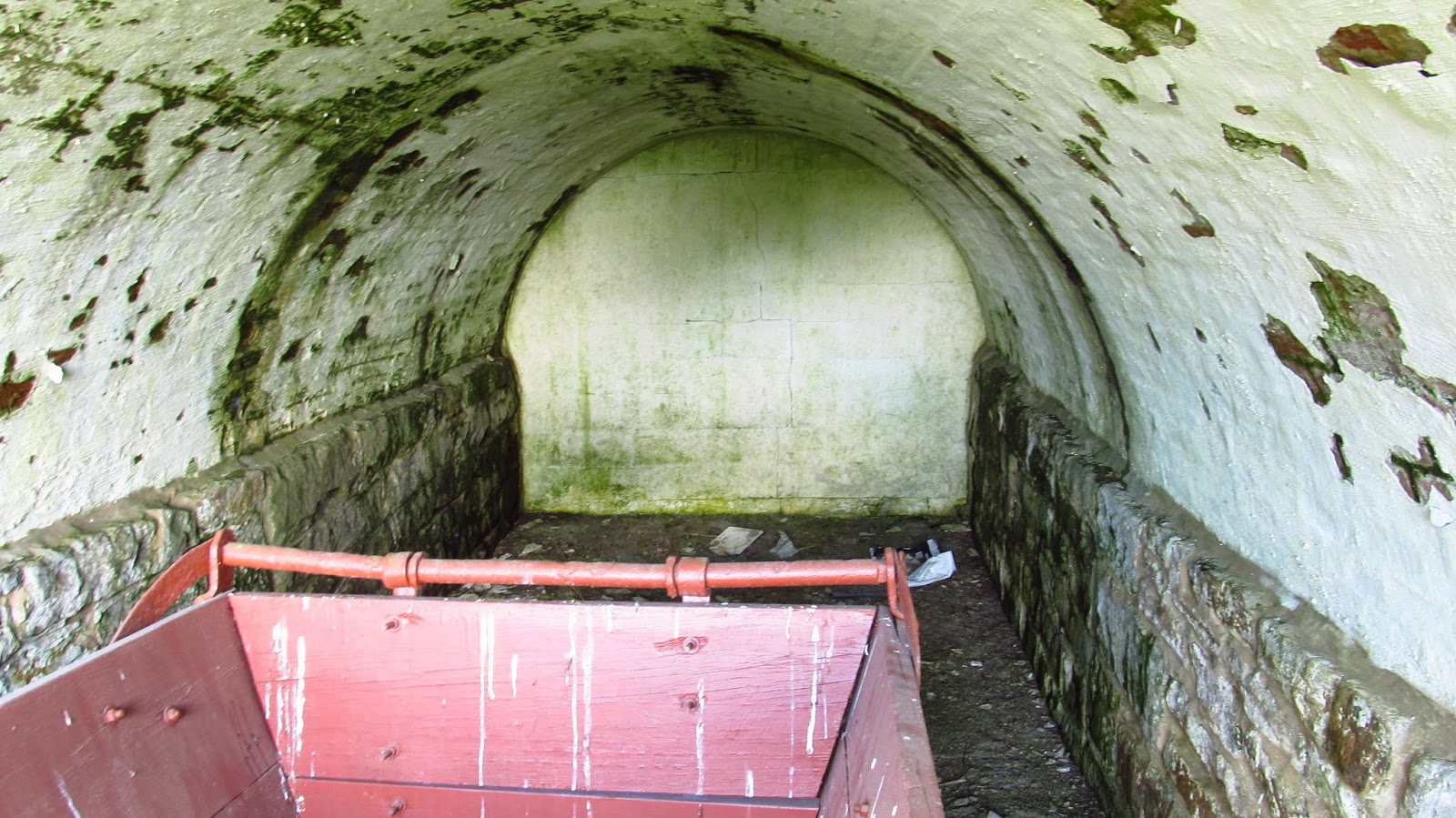The Glen White Coke Works were operated by the Glen White Coal and Lumber Company. The earliest mention I have found comes from the 1880-1881 Bureau Of Industrial Statistics Report. This early report places the number of ovens at 80 and the production of coke for the year at 32,402 tons. The company was based in Baltimore and by 1919 employed 138 men as well as 25 boys under the age of 16. The company also built housing and created the town of Glen White. The town reached its peak in the 1920's with nearly 200 residents. The coke ovens were abandoned by the 1930's but the mines remained in operation through the early 1940's.
Today the town of Glen White is long gone but the coke ovens remain. The site is located about one mile west of the famous Horseshoe Curve. The ovens are in better condition than a lot I have found. The fronts of the ovens are almost all intact and the woods in the area are pretty easy to walk through. There is also some old stone walls along Glenwhite Run.
 |
| Approaching the coke ovens. |
 |
| The fronts of some of these were in really great condition. |
 |
| Largely intact stonework. |
 |
| A couple of them were collapsed. |
 |
| This one is struggling to stay up. |
 |
| This big tree claimed this oven a long time ago. |
 |
| My friend Stevie D. on his first coke oven expedition. |
 |
| Looking up through the trunnel hole. |
 |
| Inside one of the ovens. |
 |
| Apparently there's not enough room in the woods for this tree. |
 |
| More intact stonework. |
 |
| Really nice door. |
 |
| Very nice front. |


























































